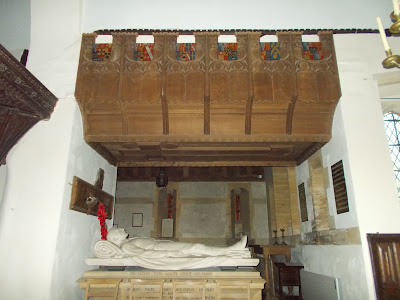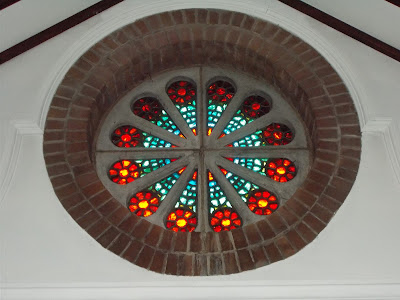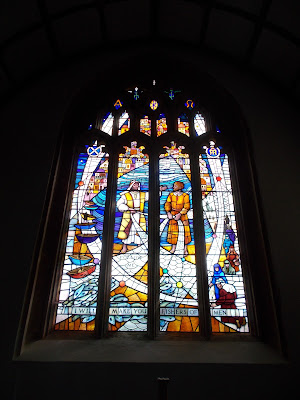Most parish churches in Somerset have some stained glass windows, many of which depict scenes from the Bible and are centuries old. However this blog post is dedicated to modern stained glass windows, which are located mainly in churches but occasionally elsewhere e.g. village halls. Modern stained glass windows are usually light and bright. Many of them were given in memory of people.
St Mary's Church, Luxborough
I presume this is a millennium window, as it has the date 2000 on it. It also says "All generations shall call me blessed.", which is what Mary, the mother of Jesus is quoted as saying in Luke Ch1 v48.
Priddy
This window in St Lawrence's Church, was given in memory of Catherine Gibbons of Eastwater Farm who died on 6th October 1988 aged 19 years.
East Window, St Peter and St Paul's Church, Odcombe
This window is in memory of a Christian writer and missionary called Constance Padwick, who died in 1968. The artist who created the window was apparently Christine Arnatt.
Good Shepherd Window, St Peter and St Paul's Church, Odcombe
In the bottom right hand corner of the window it says simply "Feed my sheep", which Jesus is quoted as saying in John Ch21 v17.
Church of the Blessed Virgin Mary, Cheddon Fitzpaine
St John the Baptist Church, Biddisham
On this window it says "Of his kingdom there shall be no end". This is a quotation from the Gospel of Luke Ch1 v33. The window was made by Gilroy, Bristol Stained Glass in 2000, which presumably makes it a millennium window.
Kingfisher window in All Saints Church, Lopen Church
Wheddon Cross Village Hall
The red band around the central picture contains a quotation from Samuel Taylor Coleridge's poem Frost at Midnight. It says "Therefore all seasons shall be sweet to thee". The window depicts plants and wild and domesticated animals that are found on Exmoor e.g. Exmoor ponies, red deer, buzzards, foxes, sheep and owls.
Daffodils or maybe sunflowers? at St Nicholas' Church, Porlock Weir (a tin tabernacle)
St Andrew's Church, Mells
This window is in memory of Sir John Francis Fortescue Horner, "who worshipped God in this chapel through all the years of his life. Unto whom God gave a wise and understanding heart. Behold such a man as this entered in to the inheritance of peace and quietness". Sir John Horner (1842-1927) was a barrister and he lived in Mells Manor. The window was designed by Sir William Nicholson and depicts St Francis of Assisi preaching to the fish and birds.
Church of St Mary and St Andrew, Pitminster
"I will make you fishers of men" Matthew Ch.4 v.19
Church of St Nicholas, Corfe
St John the Baptist Church, Ashbrittle
Church of St John the Baptist, Frome
In 1990 stained glass artist, Mark Angus was commissioned to make a stained-glass window of a historical timeline commemorating important events in Britain since 597. The events illustrated are from bottom to top:
597 St Augustine lands in Kent
685 St Aldhelm establishes the first church in Frome (the town is depicted with as a red heart with the River Frome running through it).
1066 Norman Conquest of Britain
1349 The Black Death
1536 Dissolution of the Monasteries by Henry VIII
1914-1918 First World War
1939-1945 Second World War
1945 The Atom Bomb (mushroom cloud)
1985 After 1300 years St Aldhelm's Church is still shining the light of the Gospel
It was manufactured by Derix Studios in London and Taunusstein in Germany. It is stunning.
Wildlife triptych, St Mary Magdalene's Church, Winsford
Winsford
Winsford
Daffodil window in Luccombe Church
Millennium Window, St Andrew's Church, Old Cleeve This window was commissioned by the Parochial Church Council to mark the Millennium. It was designed and made by local artist Frankie Pollak. It features an eclipse of the sun, ammonites, the churchyard pink sweet pea and the nets and fish of St Andrew.
Saint Roch with his dog at his feet, Pendomer Church
Tree of Life window at St Roch's Church, Pendomer

































































